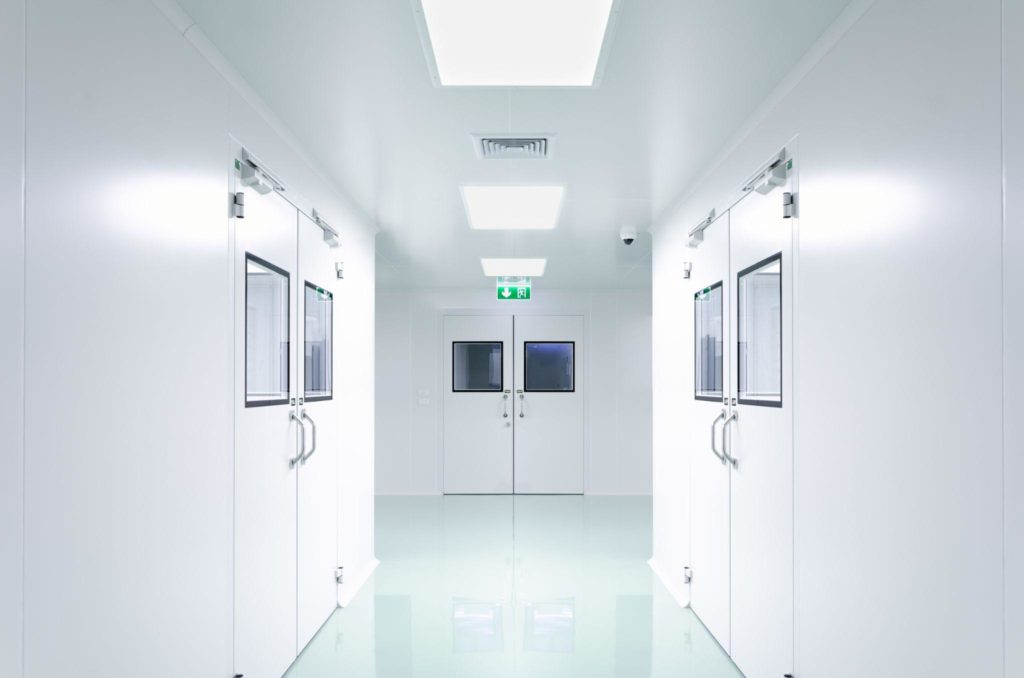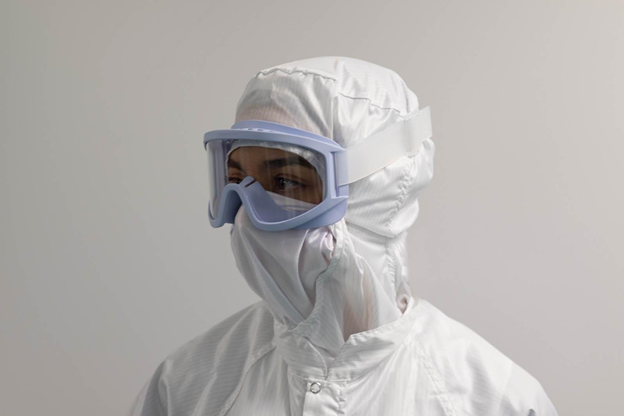Controlled environments and cleanrooms have similarities, but the terms are not interchangeable. There are significant enough differences to impact how your project is engineered. We’ll explore controlled environment/cleanroom specifics and differences, including International Organization of Standardization (ISO) requirements.
What Is a Cleanroom?
Cleanrooms are controlled environments that are free of dust, microorganisms, mold, and other contaminants. They are classified per regulatory requirements as to the maximum number of acceptable particles in the air per cubic meter (there are nine classifications identified by ISO 14644-1). Particle size is also a major consideration. A cleanroom must be tested on a regular basis to ensure compliance with its exact classification.
In addition, a cleanroom must meet regulatory requirements pertaining to temperature, humidity, and pressure control. Positive or negative pressure is used to maintain a sterile environment that keeps particles from damaging sensitive electronic, manufacturing, or pharmaceutical/medical equipment and components. Specially engineered HVAC systems and HEPA filtration are often used as well.
What Is a Controlled Environment?
In a controlled environment, temperature, pressure, and humidity are also tightly regulated to protect people, machinery, and packaging. It is isolated from other parts of a facility, although particle contamination levels are not measured. However, facility operators can implement contamination prevention procedures if they so wish.
Controlled environments are used in applications such as production of personal protective equipment (PPE). They’re used by government facilities, for machine enclosures, and for produce or cannabis grow rooms as well. Many types of laboratories that don’t require strict particle decontamination implement controlled environments.
Key Differences
A controlled environment provides stable temperature and humidity levels and can include filtration or decontamination systems to make it more sterile. Process control laboratories benefit, particularly those that don’t require a specific ISO classification. However, if a facility is packaging medical devices, semiconductor devices, or biotechnology products, an ISO-class-7-compliant or higher cleanroom is required.
Depending on the facility, it may be required to comply with an ISO class or U.S. Food and Drug Administration (FDA) guidelines. Other factors include the types and placement of filters, HVAC requirements, construction materials, fire protection, or use of air showers and/or pass-thru units. A cleanroom environment must meet lighting, air supply/filtration, electrical, plumbing, and equipment hookup requirements.
Overview of Prudential’s Cleanroom Services

Prudential Overall Supply supports cleanroom operations by providing the appropriate apparel and supplies. We specialize in cleanroom garment processing services for aseptic, particulate, and ESD-controlled environments, and we operate ISO-9001-certified garment processing facilities. A leading supplier of cleanroom uniforms and apparel, we can provide both sterile and non-sterile garments. In addition to laundry services, we can also help with a laundry needs assessment to help determine your requirements.
To learn more about the environmental control requirements for your facility and about our cleanroom services, call us at 800-767-5536.
